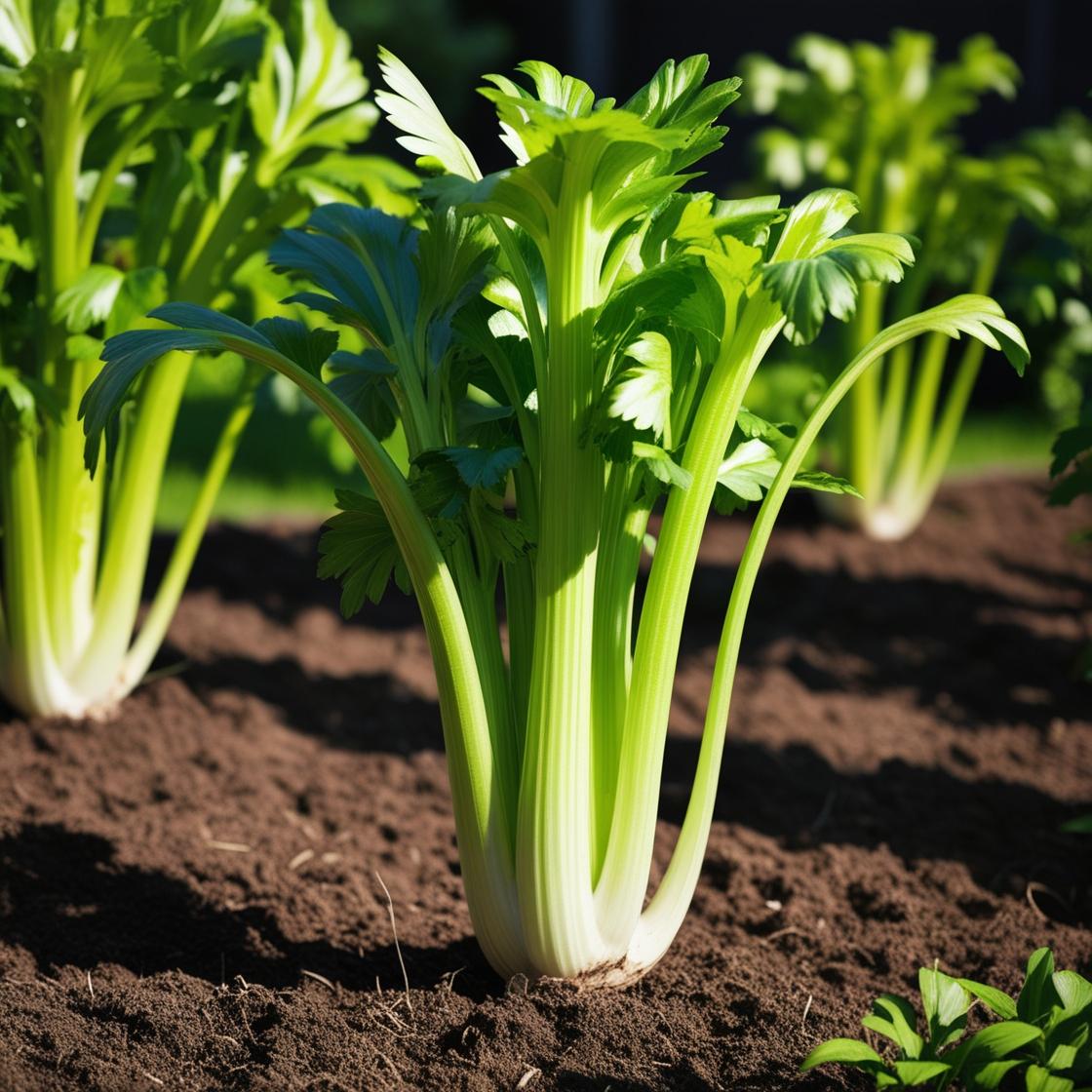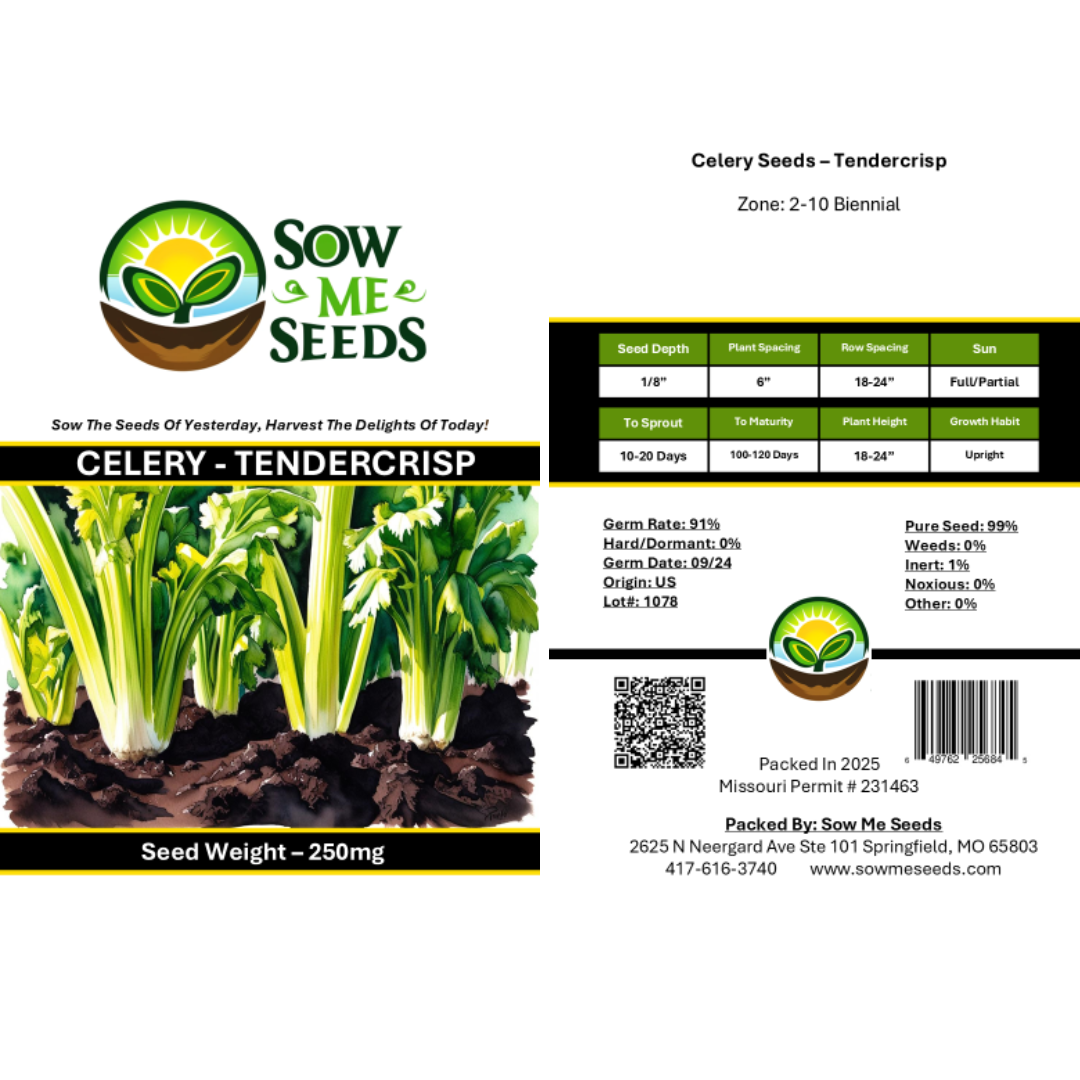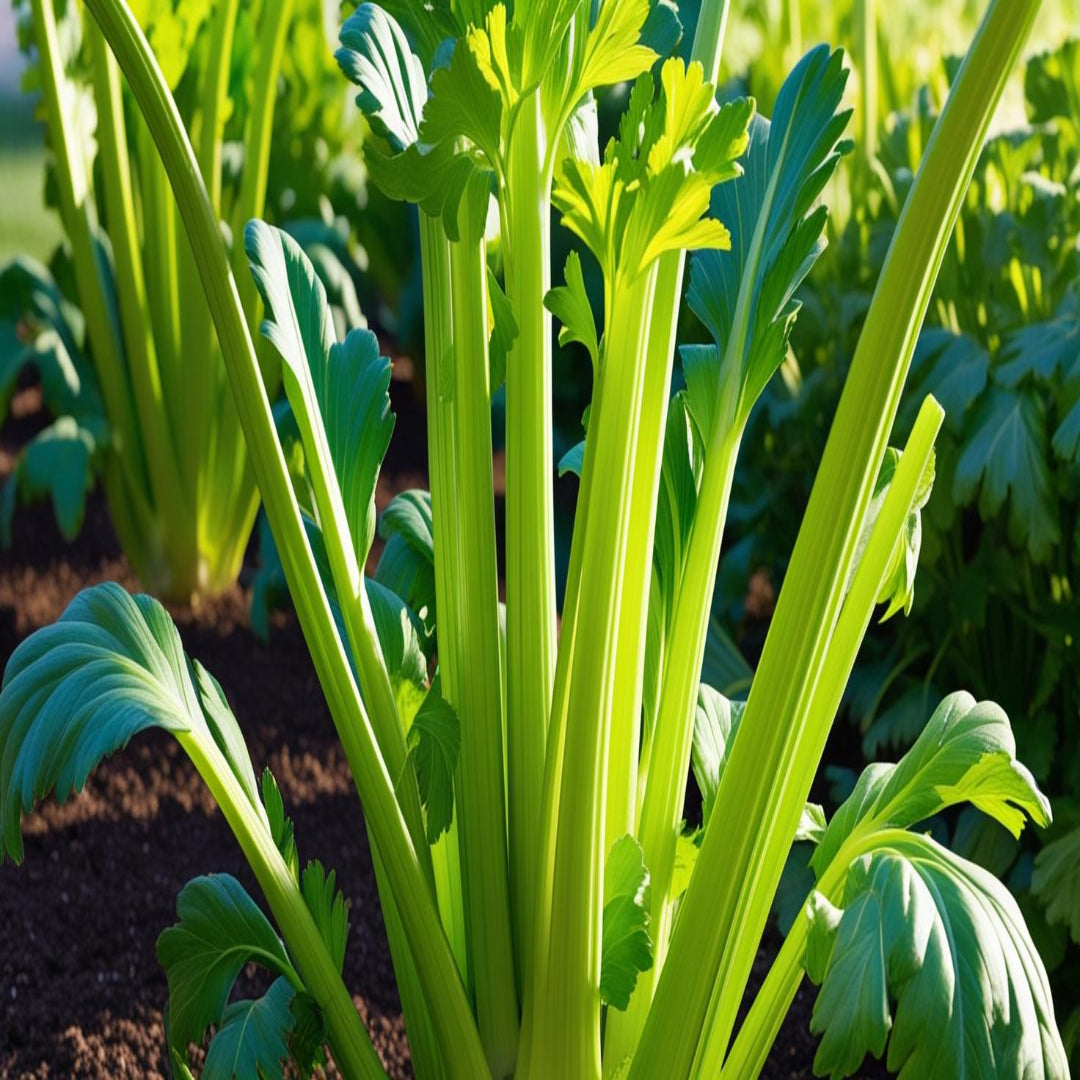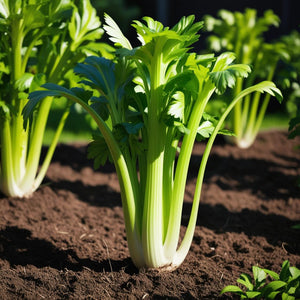- Hardiness Zone: 2-10 Biennial Usually Grown As An Annual
Seed Depth: 1/8–1/4 inch
Seed Spacing: 6–8 inches
Row Spacing: 18–24 inches
Sunlight: Full sun to partial shade
Days to Sprout: 10–21 days
Days to Maturity: 85–100 days
Growth Habit: Upright, leafy biennial grown as an annual
Sunlight: Prefers full sun but tolerates partial shade, especially in warmer climates.
Soil Type: Thrives in rich, well-drained soil with a pH of 6.0–7.0. Adding compost improves soil fertility and moisture retention.
When to Plant: Start seeds indoors 10–12 weeks before the last frost. Transplant outdoors when temperatures consistently stay above 50°F.
Direct Sowing: Not recommended due to the small seed size and long growing season.
Indoor Sowing: Sow seeds 1/8–1/4 inch deep in seed trays. Transplant seedlings when they are 4–6 inches tall.
Succession Planting: Not typically needed, as celery has a long growing season.
Watering: Water consistently to keep the soil evenly moist but not waterlogged. Celery requires steady moisture for tender stalks.
Fertilizing: Apply a nitrogen-rich fertilizer or compost every few weeks to promote strong, leafy growth.
Pruning: Remove yellowing or damaged leaves to maintain plant health.
Pest and Disease Control: Monitor for aphids, slugs, and fungal diseases. Use organic pest controls and proper spacing for airflow.
When to Harvest: Harvest when stalks are 8–10 inches tall, typically 85–100 days after planting. Baby stalks can be harvested earlier for tender, mild flavor.
How to Harvest: Cut stalks individually at the base or harvest the entire plant at once. Handle gently to avoid bruising.
Seed Collection: Allow plants to flower and form seeds in their second year. Collect seeds once heads are fully dry.
Storing Seeds: Store seeds in an airtight container in a cool, dry place.
Why You’ll Love It
Crisp Texture: Thick, juicy stalks offer satisfying crunch and bold celery flavor.
Slow to Bolt: Maintains steady growth without premature flowering — ideal for spring and fall gardens.
Cool-Season Crop: Grows best in cooler temperatures with consistent water and rich soil.
Reliable Yields: Vigorous plants produce abundant stalks for fresh use or long simmering in soups and broths.
Plant Characteristics
Height: 18–24 inches
Growth Habit: Upright rosette with tightly packed stalks and leafy tops
Stalk Type: Thick, pale green stalks with strong ribs and mild texture
Days to Maturity: 100–120 days
Hardiness: Cool-season biennial grown as an annual
Flavor and Culinary Uses
Flavor: Bold, fresh, and slightly peppery with a clean finish
Culinary Uses: Great for fresh snacking, chopping into salads, stir-fries, soups, stews, and homemade stocks
Companion Planting Tips
Good Companions: Onions, leeks, tomatoes, and bush beans
Avoid Planting Near: Corn or carrots (may compete for nutrients or space)
Bonus Benefit: Fragrant foliage may deter certain pests when interplanted with leafy greens
Common Issues and Solutions
Bitter Stalks: Ensure even moisture and rich soil to prevent toughness and bitterness
Bolting in Heat: Provide mulch and partial afternoon shade in hot climates
Slow Germination: Be patient — celery takes time to sprout. Start indoors and keep soil consistently moist
Seeds Per Packet
| 250mg | Approximately 575 |
| 1g | Approximately 2,300 |
Why You’ll Love It
Crisp Texture: Thick, juicy stalks offer satisfying crunch and bold celery flavor.
Slow to Bolt: Maintains steady growth without premature flowering — ideal for spring and fall gardens.
Cool-Season Crop: Grows best in cooler temperatures with consistent water and rich soil.
Reliable Yields: Vigorous plants produce abundant stalks for fresh use or long simmering in soups and broths.
Plant Characteristics
Height: 18–24 inches
Growth Habit: Upright rosette with tightly packed stalks and leafy tops
Stalk Type: Thick, pale green stalks with strong ribs and mild texture
Days to Maturity: 100–120 days
Hardiness: Cool-season biennial grown as an annual
Flavor and Culinary Uses
Flavor: Bold, fresh, and slightly peppery with a clean finish
Culinary Uses: Great for fresh snacking, chopping into salads, stir-fries, soups, stews, and homemade stocks
Companion Planting Tips
Good Companions: Onions, leeks, tomatoes, and bush beans
Avoid Planting Near: Corn or carrots (may compete for nutrients or space)
Bonus Benefit: Fragrant foliage may deter certain pests when interplanted with leafy greens
Common Issues and Solutions
Bitter Stalks: Ensure even moisture and rich soil to prevent toughness and bitterness
Bolting in Heat: Provide mulch and partial afternoon shade in hot climates
Slow Germination: Be patient — celery takes time to sprout. Start indoors and keep soil consistently moist
Seeds Per Packet
| 250mg | Approximately 575 |
| 1g | Approximately 2,300 |





Share and get 15% off!
Simply share this product on one of the following social networks and you will unlock 15% off!